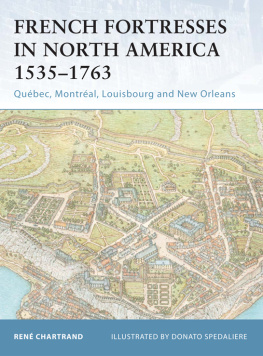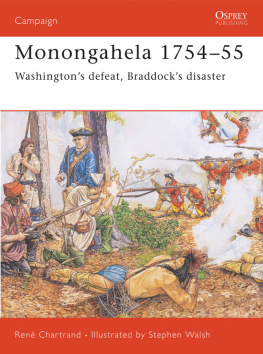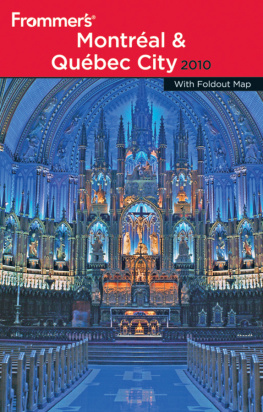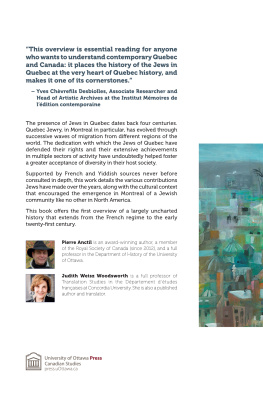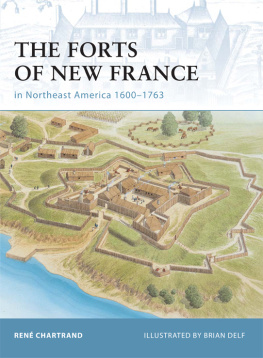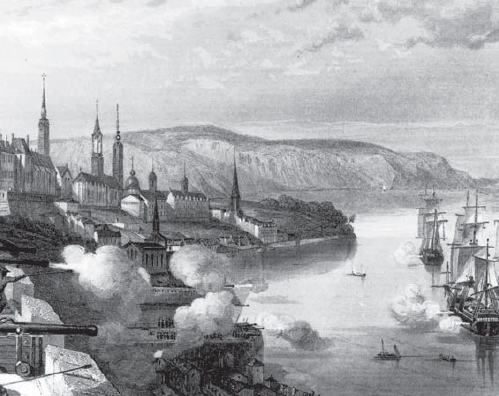FORTRESS 27
FRENCH FORTRESSES IN NORTH AMERICA 15351763
Qubec, Montral, Louisbourg and New Orleans
| REN CHARTRAND | ILLUSTRATED BY DONATO SPEDALIERE |
Series editors Marcus Cowper and Nikolai Bogdanovic
Contents
Introduction
Following the discovery of America by Columbus in 1492, European colonists built their style of fortification in the New World in an attempt to ensure their safety and consolidate their conquests. The Spanish and Portuguese were the first to build sizeable forts, some of which evolved into fortified townsfortressesas their settlements grew. San Juan (Puerto Rico), Havana (Cuba), Cartagena de Indias (Colombia) and several others in the Spanish Main and South America were already renowned by the 17th century. The French and the British came later to North America and thus the establishment of their sizeable permanent settlements only got under way during the 17th century. The British colonists rapidly outgrew their small stockaded settlements along the North American coastline but did not build elaborate fortifications to protect their towns. Their French neighbors did.
From the early 17th century until the end of the Seven Years War in 1763, the greater part of North America came under the French realm and much of it was called La Nouvelle-France (New France). Thanks to relentless explorers and traders, the land mass of New France was enormous, extending from the Gulf of St. Lawrence to the Rocky Mountains in the west and from the Great Lakes to the Gulf of Mexico in the south. But as impressive as it may have looked on a map, New France remained a weak colony in terms of population, which was sparse and scattered. It had only about 500 French inhabitants in 1641, some 14,000 in 1689 and perhaps 80,000 of French origin by the 1750s.
In the early 17th century, New France was divided into two administrative entities. The largest and most important was the colony of Canada, which included the settled areas in the St. Lawrence Valley with the three towns of Montral, Trois-Rivires and Qubec. It also extended into the western wilderness as far as it had been explored, an ongoing process. On the Atlantic seaboard was the small colony of Acadia whose settlements were spread in parts of present-day Nova Scotia, New Brunswick and Maine. On the island of Newfoundland was the port of Placentia that formed a small colony. Following the cession of Acadia and Placentia to Britain by the Treaty of Utrecht in 1713, the garrisons and some of the settlers were moved to Cape Breton Island, subsequently renamed Isle Royale, where, from 1720, the fortress of Louisbourg was built.
Further south, the French had reached the Gulf of Mexico in 1682 by coming down the Mississippi River and, from 1699, settlements were established on the coast to make up the third entity, the colony of Louisiana, in the present-day states of Alabama, Mississippi and Louisiana. Today a relatively small American state, Louisiana in the 18th century covered an enormous territory extending from Canada to the Gulf of Mexico. Louisianas population was modest and its settlements were concentrated on the Gulf Coast and in Les Illinois (also called Upper Louisiana), in the general area of present-day St. Louis.
The government of New France was patterned after that of a French province. The governor-general of New France, who resided in Qubec, had overall authority and was commander-in-chief. He was assisted by the intendant in financial and civic matters and the bishop in religious issues, their respective powers being devolved to local governors, commissaries and senior priests. In Canada, there were local governors in Montral and Qubec. Isle Royales governor was in Louisbourg and Louisianas governor was in New Orleans. Although nominally subordinate to the governor-general in Qubec, the governors of Isle Royale and Louisiana were independent as they reported directly to the minister responsible for naval and colonial affairs in Versailles. Canada, the Atlantic seaboard colonies and Louisiana each had their respective garrisons of colonial troops.
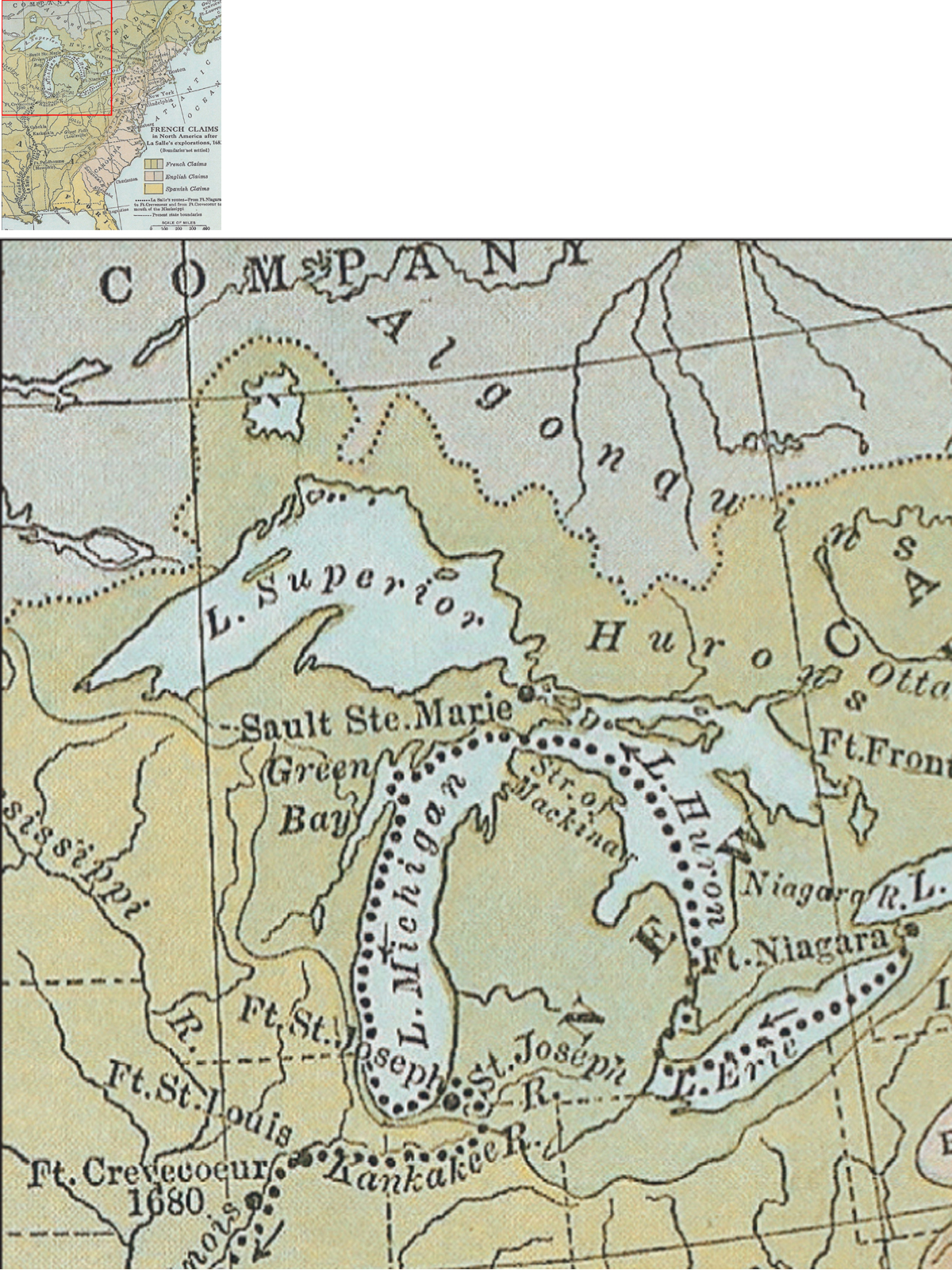
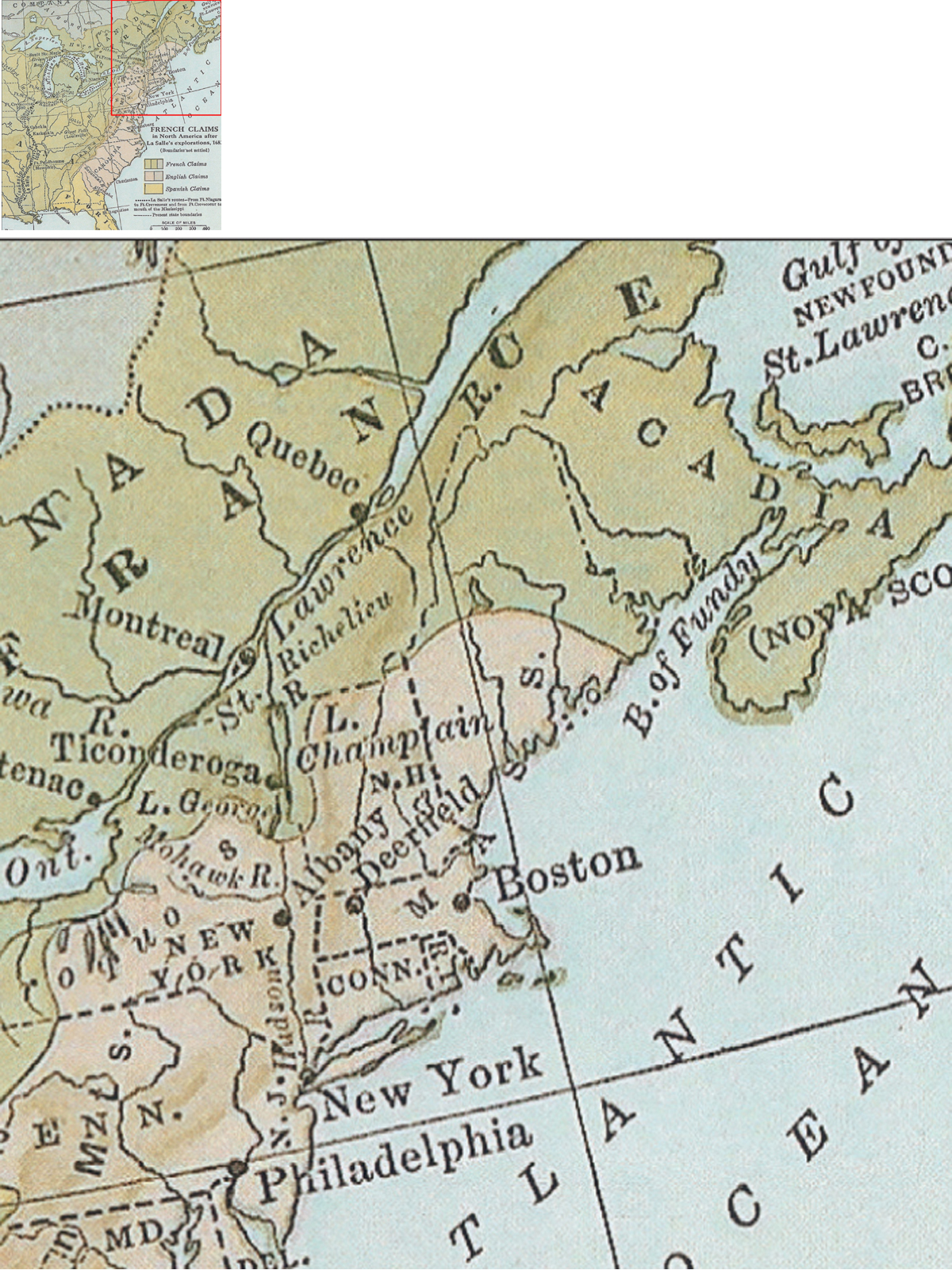
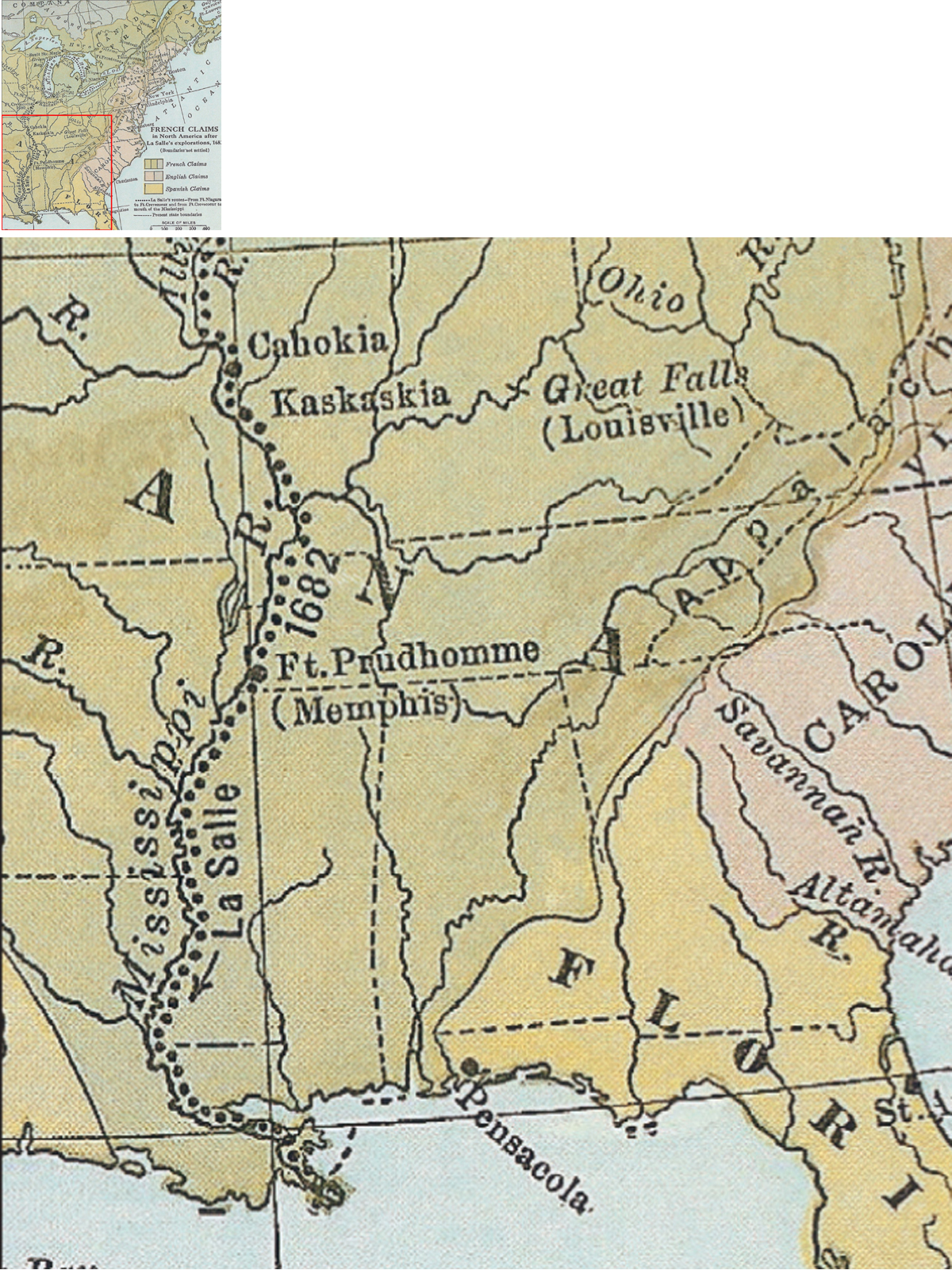
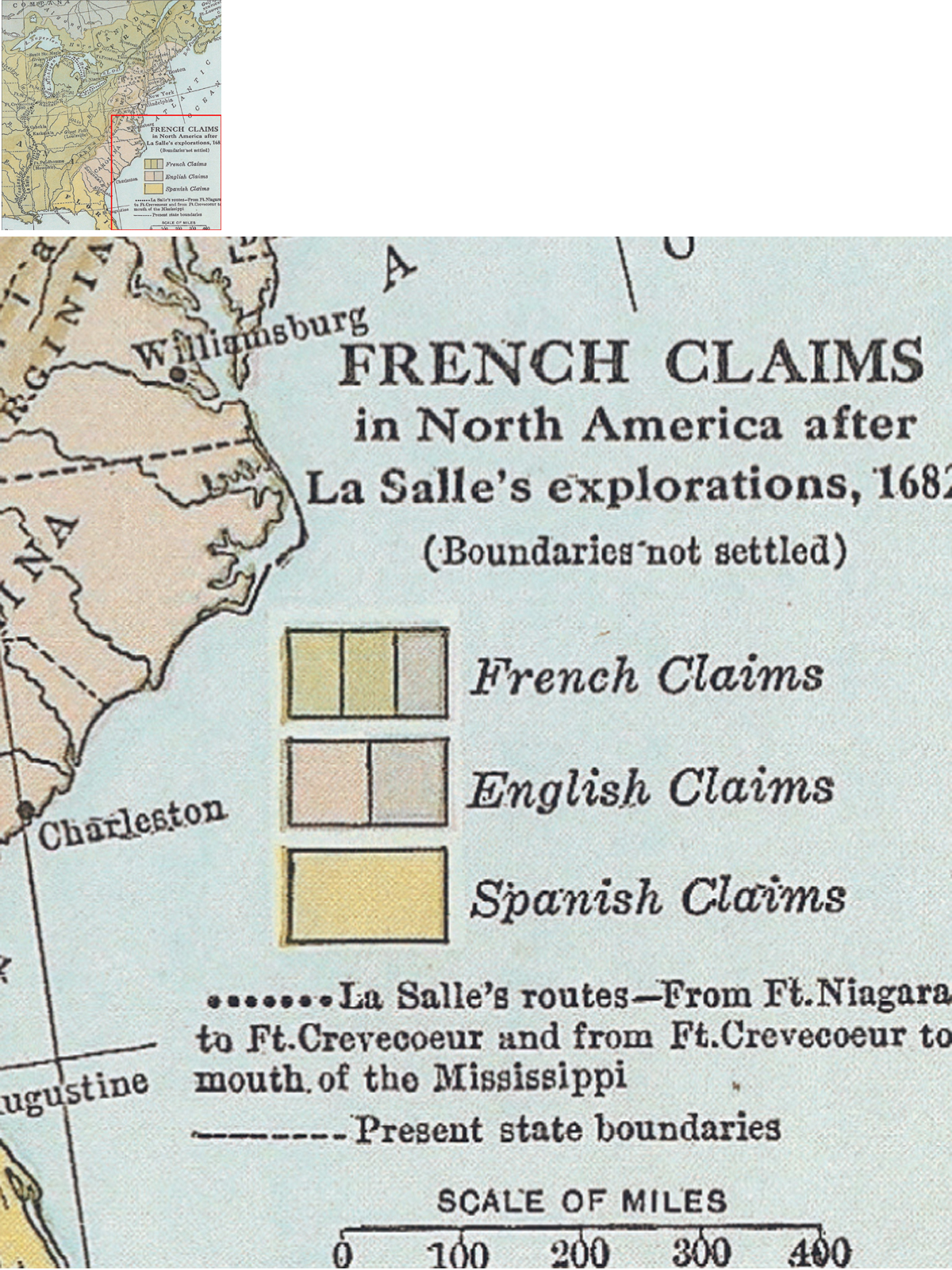
Detail of a map of French claims to North America following Robert Cavelier de La Salles explorations (dotted line) from Canada to the Gulf of Mexico. It formed a great arc enclosing the British coastal colonies. Starting in the northeast (top right corner) with Cape Breton Island, where Fortress Louisbourg was built from 1720, it extended west along the St. Lawrence River, passing the fortresses of Qubec and Montral and continuing to the Great Lakes; then south on the Mississippi River to the Gulf of Mexico where New Orleans, also eventually enclosed by walls, would be built. The forts shown along the Mississippi River were mostly the early ones built by La Salle.
The fortresses of New France studied in this bookthat is to say, substantial towns and cities enclosed by protective wallswere extraordinary in their variety. (The term place forte rather than forteresse was generally used by the French to denote a town surrounded by fortifications until the 1870s.) Qubec was a formidable natural fortress; the defenses of Louisbourg were almost transposed from Vaubans textbooks; Montral had a substantial wall and New Orleans was eventually also protected by moats and redoubts. Although quite different in fortification style and extent, Qubec, Montral, Louisbourg and New Orleans all had one thing in common: their strategic importance was tremendous and the fall of any one of them practically ensured the fall of their entire area.
Except for New Orleans, all were besieged during the 17th and 18th centuries. Qubec resisted in 1690 but fell in 1759; its henceforth British garrison would resist in 1760, and again (against the Americans) in 177576. Louisbourg fell twice, in 1745 and 1758, after great sieges. Montral held the last French army in Canada when it surrendered to three British armies in September 1760. Only New Orleans escaped being besieged although treaties signed in Europe passed it from France to Spain in 1763, to France again in 1802 and finally to the United States of America in 1803.
One town that never quite made it as a fortress was Trois-Rivires, although it was enclosed by a palisade wall. Founded in 1634, it quickly lost its strategic and economic importance after Montral was settled in 1642. As will be seen later, its meager defenses had become useless by the middle of the 18th century.

The Coat of Arms of France, c.172560. Traditionally, the royal coat of arms was put up above the gates of fortifications. In New France, this was not always the case and, according to Chief Engineer Chaussegros de Lry, they were nowhere to be seen in this colony. In 1725, he had royal coats of arms made and put up at all government buildings, forts, gates, courtrooms and jails; and all new government buildings would have them henceforth (AC, C11A, 47). This particular example was once displayed over the gates of Qubec and may have been the work of Pierre-Nol Levasseur. It is now in the Canadian War Museum in Ottawa. A similar example is at the Muse de la Civilisation in Qubec. (Authors photograph)
Next page
